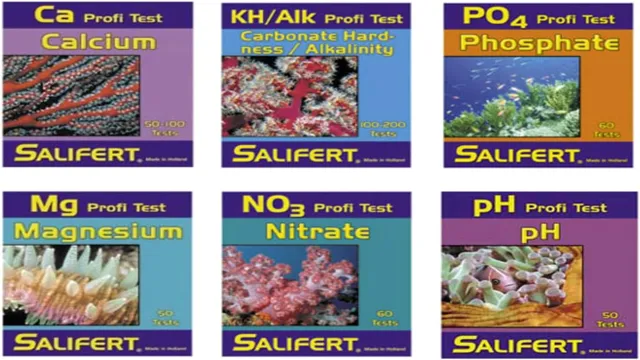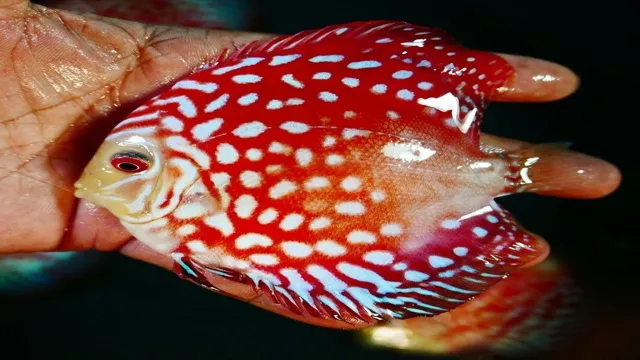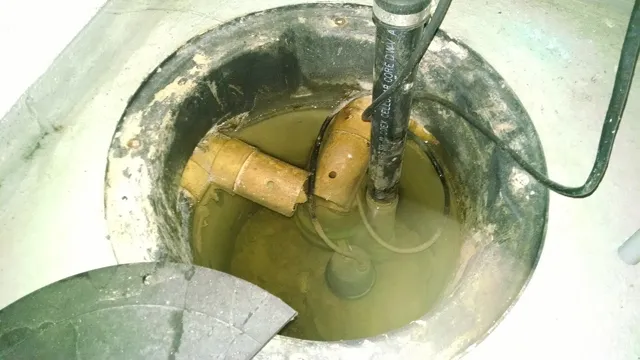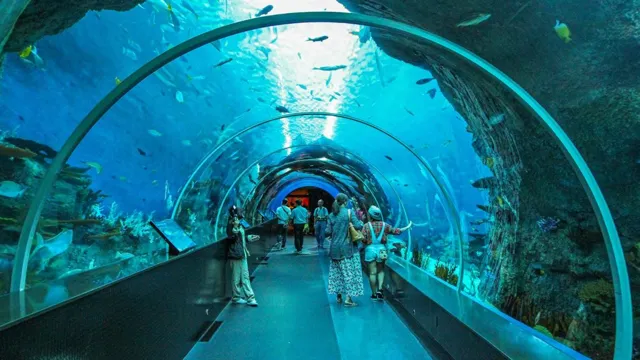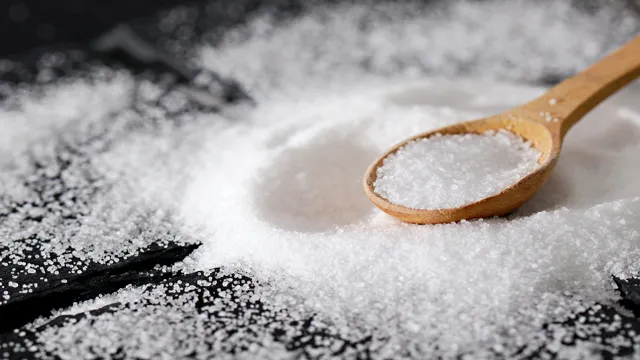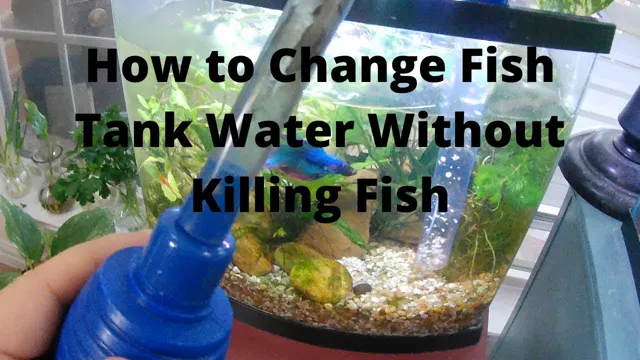Have you ever tried to create the perfect environment for your aquatic pets, only to find that the water parameters just aren’t quite right? One common issue is high KH levels, which can cause imbalances and prevent your fish and plants from thriving. Don’t worry, though – there are some simple steps you can take to lower your KH and achieve the ideal conditions for your aquarium. KH, or carbonate hardness, is a measure of the water’s ability to resist changes in pH.
If your KH is too high, it can be difficult to achieve the desired pH level for your fish and plants. Some signs that your KH may be too high include cloudy water, sluggish fish, and difficulty maintaining consistent pH levels. Lowering your KH can be done through a variety of methods, such as adding peat moss to your filter, using reverse osmosis water, or using chemical additives.
Each method has its own pros and cons, and you’ll need to choose the best option based on your specific setup and needs. It’s important to note that KH levels can also be affected by other factors, such as water changes and the types of food you’re feeding your fish. Regular testing and monitoring of your water parameters is crucial to maintaining a healthy and thriving aquarium environment.
Overall, lowering KH in your aquarium may seem like a daunting task, but with the right tools and knowledge, it can be easily achieved. By taking the time to understand your water parameters and implementing the appropriate solutions, you can create a beautiful and healthy aquatic home for your beloved pets.
Understanding KH
If you’re struggling with high KH levels in your aquarium, there are several things you can do to lower it. The first step is to understand what KH is. KH, or carbonate hardness, measures the concentration of carbonate and bicarbonate ions in your aquarium water.
Higher KH levels can lead to pH imbalance and other aquatic health issues, so it’s important to keep it within a healthy range. To lower KH levels, you can try using a reverse osmosis or deionization unit to filter your water, using peat or other natural filtration methods, or adding specific chemicals to your water such as hydrochloric acid or carbon dioxide. It’s important to test your water regularly and make gradual adjustments to avoid shocking your aquatic inhabitants.
By taking these steps, you can maintain a healthy and balanced aquarium environment.
What is KH?
KH stands for “carbonate hardness,” which is a measure of the alkalinity in water. To put it simply, KH indicates the level of buffering capacity of a solution to resist pH changes when an acid is added. The higher the KH value, the more stable and resistant the water is to changes in pH.
KH is important in aquariums because it helps maintain a healthy environment for fish and plants. It also plays a critical role in the water’s ability to support biological filtration. Understanding KH is crucial for successful aquarium keeping because proper KH levels help prevent sudden drops in pH, which can be harmful to aquatic life.
Regular testing and maintenance of KH levels are an essential part of aquarium care. So, if you’re an aquarium hobbyist, paying attention to KH should be one of your top priorities to ensure that your aquatic pets thrive in a healthy and stable environment.

Why is it important to lower KH?
KH, or carbonate hardness, refers to the concentration of carbonate and bicarbonate ions in water. It is an essential part of understanding water chemistry as it affects the pH levels and can impact aquatic life. If the KH levels in your aquarium are too high, it can lead to unstable pH levels that harm your fish and other aquatic creatures.
To lower KH, you can add reverse osmosis (RO) water or peat moss to your aquarium. It’s crucial to keep a check on KH, even if it seems negligible, as it can lead to a domino effect of issues in your aquarium. Keeping a balanced and stable environment in your aquarium is the key to a thriving aquatic community.
Lowering KH ensures that your fish and invertebrates have access to optimal living conditions, which leads to better health and longevity. So, it’s vital to keep an eye on your KH levels and take necessary steps to lower it when needed.
Testing KH Levels
When it comes to maintaining a healthy aquarium, it is crucial to test and monitor the KH levels regularly. KH or carbonate hardness is the measure of carbonates and bicarbonates in the aquarium water. High KH levels can cause pH imbalances, leading to stress and even death in fish. (See Also: How to Clean My Aquarium from Algae: A Step-by-Step Guide to Get Rid of Algae Buildup)
If you’re struggling with high KH levels in your aquarium, there are several ways to lower it. One effective method is to perform regular water changes using distilled water or reverse osmosis water. Adding driftwood or almond leaves to your aquarium can also gradually lower KH levels.
You can also use commercial products like KH buffers or pH lowering agents, but be cautious not to lower the levels too much, as sudden drops can be harmful to your fish. Remember, a balanced and healthy aquarium requires balance in all aspects, including KH levels.
How to test KH levels in your aquarium
KH levels, aquarium, testing Testing KH levels in your aquarium is a crucial step in maintaining a healthy aquatic environment. KH levels measure the concentration of carbonates and bicarbonates in your tank, which play a vital role in stabilizing pH levels and preventing acidity spikes. Testing your KH levels is easy and can be done using commercially available test kits.
The process involves adding a few drops of testing reagent to a water sample and comparing the resulting color to a chart. It is recommended that you test your KH levels regularly, especially if you have a high bio-load aquarium or a reef tank with living corals. Maintaining stable KH levels is essential for the overall health and well-being of your aquatic inhabitants.
Ideal KH levels for different types of aquariums
KH levels Testing KH levels is important for any aquarium owner as it helps maintain a healthy environment for the aquatic creatures. Different types of aquariums require different ideal KH levels. For example, a reef aquarium may need a higher KH level (around 8-12 dKH) compared to a freshwater planted tank which requires a lower KH level (around 3-5 dKH).
This is because the alkalinity of the water affects the pH levels, and different aquariums have different pH needs. Testing KH levels is easy with a test kit that comes with clear instructions. Maintaining the ideal KH levels will not only increase the lifespan of aquatic creatures but also enhance the beauty of the aquarium.
So, it is important to have a regular testing schedule and adjust the KH levels as necessary for the specific type of aquarium.
Methods for Lowering KH
If you are looking to lower KH (carbonate hardness) in your aquarium, there are a few methods you can try. One option is to add peat moss to your filter system, as it naturally lowers pH and helps to soften water. Another method is to use reverse osmosis (RO) or deionized (DI) water for water changes, as these types of water are very low in minerals and will not contribute to KH levels.
You can also try using commercial products specifically designed to lower KH levels, such as alkalinity reducers or pH buffers. It’s important to monitor your KH levels closely and make changes gradually to avoid stressing your fish or causing fluctuations in pH. By experimenting with different methods and finding what works best for your specific aquarium, you can successfully lower KH and maintain optimal water conditions for your aquatic plants and animals.
Water changes
Water changes are an essential aspect of maintaining a healthy aquarium. However, sometimes water changes are not enough to lower KH levels in your tank. You might want to consider using methods specifically designed to target KH levels.
One such method is using reverse osmosis (RO) water. This method involves using a special filter to remove minerals and other dissolved substances from tap water, reducing KH levels in the process. Another method is adding organic acids such as tannic or humic acid.
These organic acids can create a natural acidic environment in the tank, which can lower KH levels. Additionally, adding driftwood or almond leaves can help release organic acids and tannins into the water, further lowering KH levels. Ultimately, the method you choose will depend on the specific needs of your aquarium, and it’s essential to test and monitor KH levels regularly.
By taking these steps, you can keep your aquarium healthy and thriving.
Adding pH-lowering substances
When it comes to lowering KH in your aquarium, there are a few methods to consider. One option is to add pH-lowering substances, such as peat moss or driftwood. These materials release tannins that can help to lower the pH and KH levels of the water. (See Also: How to Grow Mangroves in Aquarium: Tips and Tricks for Successful Cultivation)
Another option is to use reverse osmosis (RO) water, which has very low KH and can be mixed with your tap water to achieve the desired KH level. However, it’s important to note that both of these methods can affect the stability of the water parameters and may require careful monitoring. Always test the water regularly and make adjustments as necessary to keep your aquarium healthy and thriving.
Using reverse osmosis water
If you’re looking for a way to lower the KH levels in your aquarium water, you might want to consider using reverse osmosis water. This method involves filtering your tap water through a semi-permeable membrane that removes impurities and minerals, including carbonates and bicarbonates that contribute to KH levels. By using reverse osmosis water, you can start with a blank slate and add the necessary minerals back in to achieve your desired KH levels.
While this method requires an initial investment in a reverse osmosis filtration system, it can be an effective long-term solution for maintaining stable and consistent KH levels in your aquarium. Remember, however, that it’s important to monitor your water parameters and make adjustments as needed to ensure the health and well-being of your aquatic inhabitants.
Maintaining Ideal KH Levels
If you notice that your aquarium water has high carbonate hardness (KH) levels, it can affect your fish and other aquatic animals as well as the overall health of your aquarium. High KH levels can make your aquarium water more alkaline, which can lead to several issues, including reducing the effectiveness of water treatments and potentially causing harm to your aquatic inhabitants. To lower the KH levels, you can use additives that lower the alkalinity of your water.
Two common products include pH decreasers and bicarbonate removers. However, it’s important not to lower the KH levels too quickly, as it can harm your aquatic animals. Gradual changes are key, and you should always monitor the KH levels closely to ensure they remain within a safe range for your aquarium inhabitants.
Additionally, it’s important to identify the cause of the high KH levels in the first place. It could be due to hard tap water or overuse of certain aquarium substrates, which will need to be addressed to maintain ideal KH levels.
Preventing KH levels from rising
One of the keys to maintaining a healthy aquarium is the KH level, which measures the carbonate hardness of the water. If this level gets too high, it can cause a variety of problems for your fish and plants, including difficulty breathing and stress. To prevent KH levels from rising, there are a few key steps you can take.
First, make sure to test your water regularly so that you can catch any changes early on. Secondly, avoid using hard water sources and try to use purified or softened water instead. Lastly, adding peat moss or driftwood to your tank can help lower KH levels naturally.
By staying on top of your aquarium’s KH levels and taking these steps, you can help ensure that your aquatic friends stay happy and healthy.
Balancing pH levels to maintain ideal KH levels
Maintaining ideal KH levels is crucial for any aquarium hobbyist. KH, or carbonate hardness, refers to the amount of carbonates and bicarbonates in the water. It is essential for maintaining a stable pH level, which is crucial for fish and plant health.
However, maintaining the ideal KH level can be challenging, as it is often affected by changes in other water parameters such as pH levels and temperature. One strategy to ensure optimal KH levels is through balancing the pH levels of the water. If the pH level of the water is too low, adding a buffer solution can help increase the KH level.
On the other hand, if the pH level is too high, adding an acid buffer can help lower the KH level. Regular monitoring of water parameters is crucial to ensure a healthy and balanced aquarium environment. By maintaining the ideal KH level, aquarium hobbyists can ensure the health and well-being of their aquatic inhabitants.
Final Thoughts and Recommendations
In conclusion, reducing KH levels in your aquarium is an essential process to maintain the health and wellbeing of your fish. There are several methods at your disposal, including adding distilled or reverse osmosis water, utilizing driftwood, or using pH buffers. Be sure to closely monitor pH levels and gradually lower KH levels to avoid shocking your fish with rapid pH swings. (See Also: How to Calculate Sand for Aquarium: Tips and Tricks for Optimal Aquarium Bedding)
Additionally, regular water changes and proper aquarium maintenance can also contribute significantly to lowering KH levels. Remember to test your water regularly to ensure that your KH levels are within the healthy range for your specific aquatic environment. By following these steps, you can effectively lower KH levels and provide a safe and stable habitat for your fish to thrive in.
Conclusion
So, there you have it – lowering KH in your aquarium doesn’t have to be a daunting task. By implementing some basic steps like using RO water, adding peat moss, and incorporating the right plants, you can effectively and effortlessly lower the KH in your aquarium. As we always say, a happy fish is a healthy fish, and maintaining the right water parameters like KH is essential to achieving this goal.
So, go ahead and give your aquatic buddies the perfect “home” they deserve!”
FAQs
What is KH in aquarium water?
KH stands for carbonate hardness and measures the amount of dissolved bicarbonate and carbonate ions in the water.
Why is it important to lower KH in an aquarium?
A high KH can contribute to pH instability, which can be harmful to aquarium inhabitants. Lowering KH can help stabilize pH levels.
What are some ways to lower KH in an aquarium?
Adding driftwood, peat moss, or almond leaves can lower KH over time. Using a reverse osmosis (RO) filter or diluting the water with distilled or RO water can also lower KH.
How often should KH be tested in an aquarium?
KH should be tested regularly, especially when adding new fish or plants. Test every 2-4 weeks or whenever pH fluctuations occur.
Can adding chemicals lower KH in an aquarium?
Yes, certain chemicals such as pH decreasers can lower KH levels, but they should be used with caution and according to instructions to avoid harming aquarium inhabitants.
What is the ideal KH level for an aquarium?
The ideal KH level varies depending on the type of aquarium and its inhabitants, but generally a range of 3-8 dKH is considered safe and stable.
Can lowering KH impact other water parameters?
Yes, lowering KH can impact pH and the stability of other parameters such as calcium and magnesium levels. It’s important to monitor all parameters and adjust accordingly.

